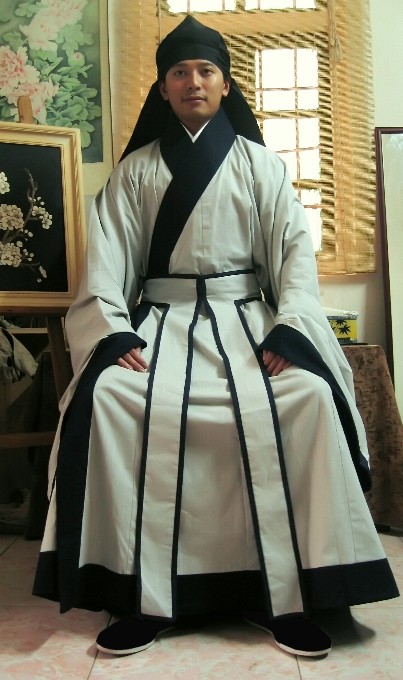
The completed clothes should look like this!
EDIT: Here is the completed thing!

Revised diagram.
For someone with next to zero tailoring skills (such as myself), here is the simplest explanation as to how a proper Shenyi, the “white-tie” for the civilian adult male, is made.
The Ruqun, which is the standard dress for women that can be formal or casual (depending on sleeve size), is more or less the same, with exception to detaching the top from the bottom, and adding a separate skirt head. The Ruqun’s technicalities is beyond the scope of this post, for now.
With this diagram, one can fabricate a Shenyi by acquiring some black and white fabric. At 120cm broadcloth, one would require about 5m of material (on the safe side). Dark blue or green can replace the black, but black is still recommended.
NOTE: Sashes for tying up the clothes itself for wearing is not included in these diagrams. These are assumed knowledge for the Hanfu tailor, and sashes should be sewn on all Hanfu in four places:
- The inside of the left armpit, and is tied with 3 when worn.
- The upper edge of the end of the left collar, which is tied with 4 when worn.
- The upper edge of the end of the right collar, which is tied with 1 when worn.
- The outside of the right armpit, and is tied with 2 when worn.
In the details of this post, I will summarize the recent discussions and findings of the Hanfu Movement in regards to necessity of cutting seams, fabric widths, and the shape of the skirt. Please read on.
More









Recent Comments